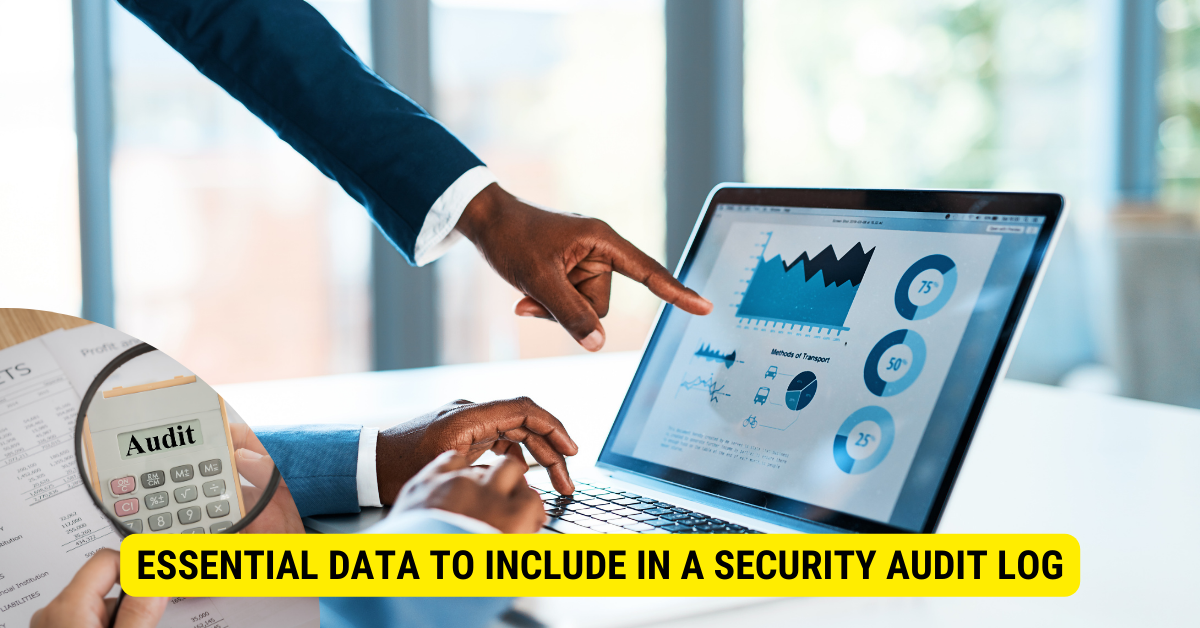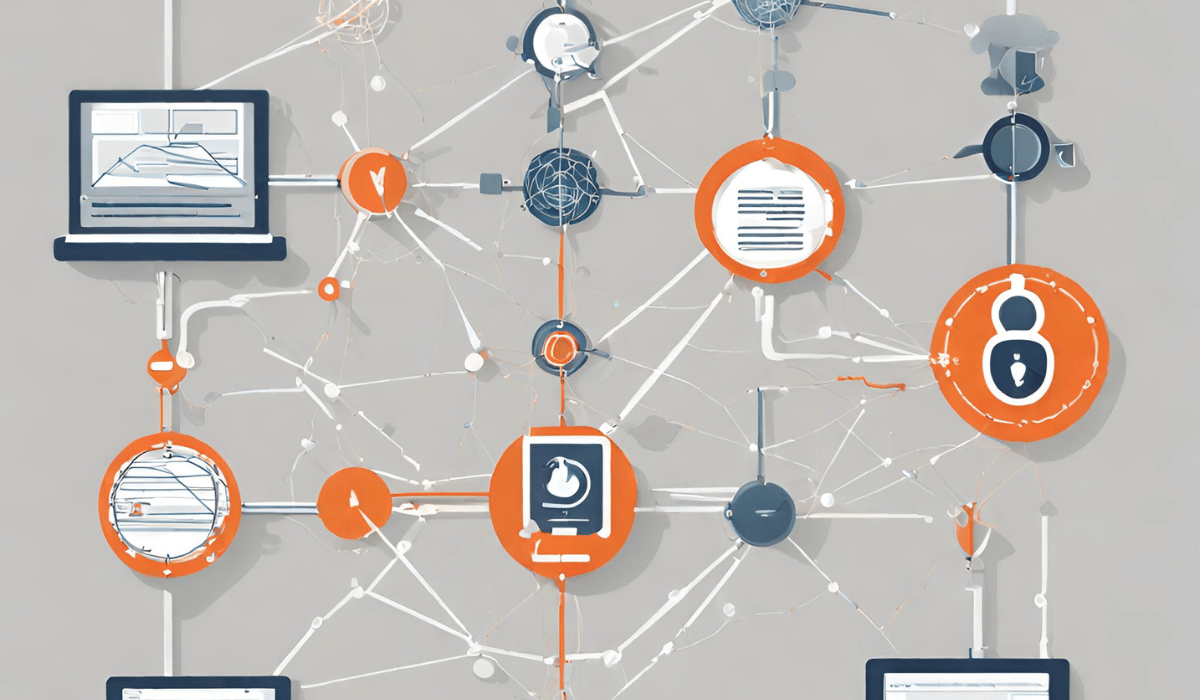A security audit log should include essential information such as user activities, login attempts, file access, system changes, and security incidents.
Incorporating a robust auditing system in your cybersecurity measures is no longer optional in an advancing digital landscape where cyber threats are ever-present. Such an auditing system entails a comprehensive security audit log capturing crucial information to detect, tackle, and prevent potential security risks. We will delve into the significance of security audit logs, the essential data they should contain, and how you can effectively analyze them to strengthen your cybersecurity posture.
Understanding the Importance of a Security Audit Log
The importance of a well-maintained security audit log cannot be overstated when discussing cybersecurity. Security audit logs serve as digital “footprints,” recording every movement within your system. They document who interacted with the system, when, where, and what was done. These logs function as an indispensable tool in managing and understanding the intricate operations of your systems while also offering a means of identifying any anomalies that could indicate a breach.
But what exactly is the significance of these audit logs in the realm of cybersecurity? Let’s delve deeper into their role in strengthening your systems’ overall security.
The Role of Security Audit Logs in Cybersecurity

Security audit logs play a vital role in strengthening cybersecurity. By consistently tracking and accumulating data relating to your system’s operations, logs create a big-picture view of system operations over a timeline, enabling the detection of patterns and anomalies. Understanding these nuances can help identify and mitigate potential threats, often before they materialize into a significant problem.
For example, imagine a scenario where an employee’s account is compromised. The security audit log would record unauthorized access attempts, unusual login locations, or suspicious activities associated with that account. By analyzing these logs, security teams can quickly identify the breach and take immediate action to mitigate the impact.
Not only do security audit logs allow for an immediate response to potential risks, but they also assist with comprehensive post-event analysis. Examining logs after a breach can pinpoint where defenses were circumvented, inform enhancements to security measures, and even fulfill regulatory compliance requirements.
By maintaining detailed security audit logs, organizations can enhance their cybersecurity posture and gain valuable insights into their systems’ overall health and performance.
Essential Data to Include in a Security Audit Log

While we have discussed some vital components, a comprehensive security audit log should go beyond these. It should encompass a broad spectrum of data to ensure thorough scrutiny and effective threat detection.
In addition to the components mentioned previously, several other important pieces of information should be included in a security audit log. These additional details provide a more comprehensive view of the system’s security and help identify potential vulnerabilities.
Authentication Information
Authentication information, such as login times, account names, and the use of permissions, forms another essential part of a security audit log. This information can help identify unauthorized access and abuse of privileges, ensuring only those with the right permissions can access sensitive data.
For example, tracking the exact time of each login can help detect suspicious patterns or unusual login activities. Monitoring the account names associated with each login can reveal any attempts to impersonate legitimate users or create unauthorized accounts.
Furthermore, keeping a record of the permissions assigned to each user can help identify instances where individuals may have been granted excessive privileges or unauthorized access to certain resources.
System and Network Changes

Any changes to the system or network configurations and structures can significantly affect system security. Therefore, keeping a meticulous record of these changes helps to spot any unauthorized alterations that might compromise the organization’s defenses.
For instance, tracking modifications to firewall rules or network settings can help identify any attempts to bypass security measures or create unauthorized network connections. Additionally, monitoring changes to system configurations, such as software installations or modifications to system files, can help detect potential security breaches or unauthorized system modifications.
Organizations can quickly identify and address any suspicious or unauthorized activities that threaten their security infrastructure by maintaining a comprehensive log of system and network changes.
Access and Permission Changes
Finally, tracking any changes in access rights or permissions is crucial. Unauthorized changes to access controls may put sensitive data at risk, so it’s important to have an active record of who gets access to what.
Organizations can identify attempts to escalate privileges or gain unauthorized access to sensitive data by monitoring access and permission changes. For example, if an employee’s access level suddenly changes to allow them access to confidential information they previously did not have permission to view, it could indicate a potential security breach or insider threat.
Furthermore, tracking permission changes can help organizations ensure that access rights are granted and revoked on time, reducing the risk of data exposure or unauthorized access due to outdated permissions.
In conclusion, while the components mentioned earlier are crucial, a comprehensive security audit log should include additional details such as authentication information, system and network changes, and access and permission changes. By maintaining a thorough and detailed log, organizations can enhance their ability to detect and respond to security threats effectively.
How to Effectively Analyze Security Audit Logs?
Having a comprehensive security audit log is one part of the puzzle; knowing how to examine the data effectively is the other. The process might be overwhelming given the vast amount of data logs generated. However, once decoded, this data is a gold mine of information.
When analyzing security audit logs, it is crucial to understand what you are looking for clearly. Each log entry can provide valuable insights into potential security breaches, unauthorized access attempts, or suspicious activities within your system. By carefully reviewing these logs, you can identify patterns, anomalies, and potential vulnerabilities that may have been exploited.
Regular Review and Monitoring
Firstly, implementing a regular schedule for reviewing and monitoring security audit logs is vital. This will ensure that your defenses stay strong, potential threats are appropriately managed, and your compliance needs are satisfactorily met.
During the review process, paying attention to any recurring patterns or trends in the log entries is essential. For example, a sudden increase in failed login attempts from a specific IP address could indicate a targeted attack. Identifying such patterns can proactively strengthen your security controls and prevent potential breaches.
Using Log Analysis Tools
Given the massive volume of logs, your system might churn out, using tools for log analysis is advisable. These tools make the job manageable, efficient, and more accurate, highlighting potential security threats that may go unnoticed.
Log analysis tools employ machine learning algorithms and anomaly detection techniques to sift through the vast amount of log data and identify critical events. These tools can automatically categorize log entries, prioritize them based on severity, and generate real-time alerts for suspicious activities. By leveraging these tools, you can significantly reduce the time and effort required for manual log analysis, allowing you to focus on investigating and responding to potential security incidents promptly.
Responding to Suspicious Activities
Detecting suspicious activity is just the beginning. Your system should be primed to follow through with an effective incident response that mitigates potential damage, includes a recovery plan, and outlines preventive measures to avoid future recurrences.
When responding to suspicious activities identified in the security audit logs, it is crucial to have a well-defined incident response plan in place. This plan should outline the steps, the individuals responsible for each step, and the communication channels. By having a structured incident response plan, you can ensure a coordinated and timely response, minimizing the impact of security incidents on your organization.
Additionally, it is essential to continuously learn from these incidents and update your security controls accordingly. By analyzing the root causes of security breaches or vulnerabilities, you can implement preventive measures to avoid similar incidents. This iterative approach to security helps strengthen your overall cybersecurity posture and ensures that your systems remain resilient against evolving threats.
Key Components of a Security Audit Log
A high-functioning security audit log contains critical elements that provide comprehensive insights into your system’s activities. Let’s consider the key components that should feature in every security audit log.
A security audit log is an essential tool in monitoring and maintaining the security of your system. It records various user and system activities, timestamps, and IP addresses to help detect irregularities, trace potential attacks, and identify suspicious activities.
User and System Activity Data
To begin with, a security audit log should contain data related to all user and system activities. This includes details on system interactions, such as file accesses, software installations, system errors, and anomalies. Recording such activities helps detect irregularities or unauthorized access attempts early.
For example, if a user attempts to access a file without permission, this activity would be logged in the security audit log. Similarly, if a system error occurs, the log captures the details of the error, allowing administrators to investigate and resolve the issue promptly.
Timestamps and Sequence of Events
Timestamps, the exact time at which a particular activity occurred, should be a staple in any security audit log. With a detailed sequence of events, timestamps enable security experts to pinpoint when a security incident occurred, helping trace the progress of potential attacks and predict future ones.
For instance, if a security breach occurs, the security audit log can provide a chronological record of events leading up to the breach. This information is invaluable in understanding the nature of the attack and implementing appropriate measures to prevent similar incidents in the future.
Source and Destination IP Addresses
Details like the source and destination IP addresses offer necessary insights into where an interaction or request originated and where it was intended. This component assists in identifying suspicious activities, potentially destructive payloads being sent to your system, or data exfiltration attempts—vital for an effective security audit log.
By analyzing the source IP address, security professionals can determine if an activity originates from a trusted or suspicious source. Similarly, the destination IP address helps understand where the activity was intended to reach, providing valuable context for investigating unauthorized access attempts or potential data breaches.
In conclusion, a well-maintained security audit log is crucial for maintaining the security and integrity of your system. By including comprehensive user and system activity data, timestamps, and source and destination IP addresses, you can enhance your ability to detect and respond to security incidents effectively.
Why Every Business Needs a Security Audit Log
No matter the size or nature of your business, maintaining a robust security audit log has definitive advantages. A small business may believe it’s less prone to cyber-attacks, but statistics suggest otherwise. Cyber-criminals often target small to medium-sized enterprises due to their perceived weaker defenses.
A comprehensive security audit log helps ensure a proactive approach to threat management. It enables businesses to identify and handle vulnerabilities before exploiting them, reinforcing their cybersecurity infrastructure.
Moreover, security audit logs are beneficial for detecting and preventing external threats and internal security. Whether intentional or accidental, insider threats can pose significant risks to an organization’s sensitive data. By monitoring and analyzing security audit logs, organizations can promptly identify any suspicious activities by employees or contractors, minimizing the potential damage caused by insider attacks.
Key Takeaways
- A security audit log records critical events and activities related to system and network security.
- Typical entries include login attempts, user actions, system changes, file access, and security-related incidents.
- Each log entry should be timestamped, include the source of the event, and provide relevant details for security analysis.
- Security audit logs should be secure, tamper-resistant, and accessible only to authorized personnel.
- Regular review and analysis of audit logs help detect security breaches and potential vulnerabilities.
FAQs
What should I do if I find suspicious entries in the security audit log?
If you encounter suspicious activities in the audit log, investigate them promptly and take appropriate action to mitigate potential threats.
How long should security audit logs be retained?
The retention period for security audit logs depends on regulatory requirements, organizational policies, and the data’s relevance for investigations.
Conclusion
In conclusion, security audit logs are essential to any robust cybersecurity strategy. They provide organizations with a detailed record of system activities, enabling them to promptly detect and respond to potential threats. The maintenance and regular analysis of a detailed security audit log are key factors in achieving a strong cybersecurity posture. By knowing what data you should be looking for and understanding how to interpret that data effectively, you can stay one step ahead of potential cyber threats.
